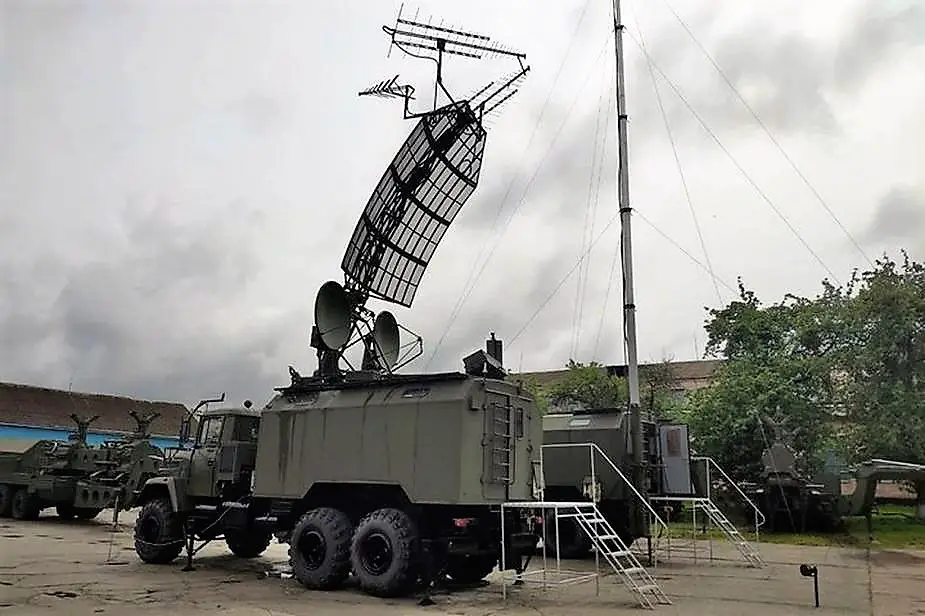According to Defense Blog, the Chief Directorate of Intelligence of the Ukrainian Ministry of Defense on February 7 announced that the Ukrainian army is upgrading its advanced passive detection systems called “Kolchuga”. The upgrade should greatly increase the sensitivity of the passive detection system.
Follow Army Recognition on Google News at this link

Kolchuga passive detection system (Picture source: Wikipedia)
The Kolchuga passive sensor is an electronic-warfare support measures system developed in the Soviet Union and manufactured in Ukraine. Its detection range is limited by line-of-sight but may be up to 800 km (500 mi) for very high altitude, very powerful emitters. Frequently referred to as Kolchuga Radar, the system is not really a radar, but an ESM system comprising three or four receivers, deployed tens of kilometers apart, which detect and track aircraft by triangulation and multilateration of their RF emissions.
Original Kolchuga was developed in the 1980s by Rostov military institute of GRU and Topaz radioelectronical factory in Donetsk. Serial production started in 1987. 44 units were produced before 1 January 1992, 14 of them left in Ukraine.
After the collapse of the Soviet Union, Kolchuga-M was modernized by the Special Radio Device Design Bureau public holding, the Topaz holding, the Donetsk National Technical University, the Ukrspetsexport state company, and the Investment and Technologies Company. It took them eight years (1993–2000) to conduct research, develop algorithms, test solutions on experimental specimens, and launch serial production. The relatively cheap Ukrainian Kolchuga-M passive radar station is able to detect and identify practically all known active radio devices mounted on ground, airborne, or marine objects.
Kolchuga is an electronic support measures system that employs two or more sites to locate emitters by triangulation. The system is vehicle mounted and comprises a large vertical meshed reflector, with two smaller circular parabolic dishes beneath and a pair of VHF-to-microwave log-periodic antennas above. The dishes may exploit amplitude monopulse techniques for improved direction-finding, whilst the angled spacing of the log-periodic antenna suggests that they may use phase interferometry to improve angle measurements. Various smaller antennas, presumably for inter-site communications are to the side and rear of the dish.
The detection range is one of the best in its class, but it is highly dependent on the emitted power of the transmitter being tracked and requires satisfaction of the line of sight condition to at least two receiving sites for triangulation (compared with three sites for a multilateration system such as the VERA passive sensor). A Kolchuga complex can detect and locate air and surface targets and trace their movement to a range generally limited only by the common line-of-sight of the stations. Assuming no terrain masking, at 100 m altitude (above local terrain) and a target at 10 km (30 kft), the range of the system would be approximately 450 km. For targets at altitudes of 20 km (60 kft) the line of sight limitation would be 620 km—but few targets fly at such altitudes. Being line-of-sight limited, the system is an effective early warning air defense system against high power emitters.
Kolchuga is able to detect and identify many types of radio devices mounted on ground, airborne, or marine objects. Target detection relies only on an emitter having sufficient power and being within Kolchuga's frequency range. Target identification, however, is more complex and is based on the measurement of different parameters of the transmitted signal—such as its frequency, bandwidth, pulse width, pulse repetition interval, etc. Kolchuga has been reported to use around forty different parameters when identifying a target. These parameters are compared to a database in order to identify both the type of emitter and, in some cases, even the specific piece of equipment (by identifying the unique signature or "fingerprint" that most transmitters have, due to the variations and tolerances in individual components). The database within Kolchuga is said to have the capacity to store around three hundred different types of emitter and up to five hundred specific signatures for each type.

Kolchuga passive detection system (Picture source: via Defense Blog)
Defense News February 2022















